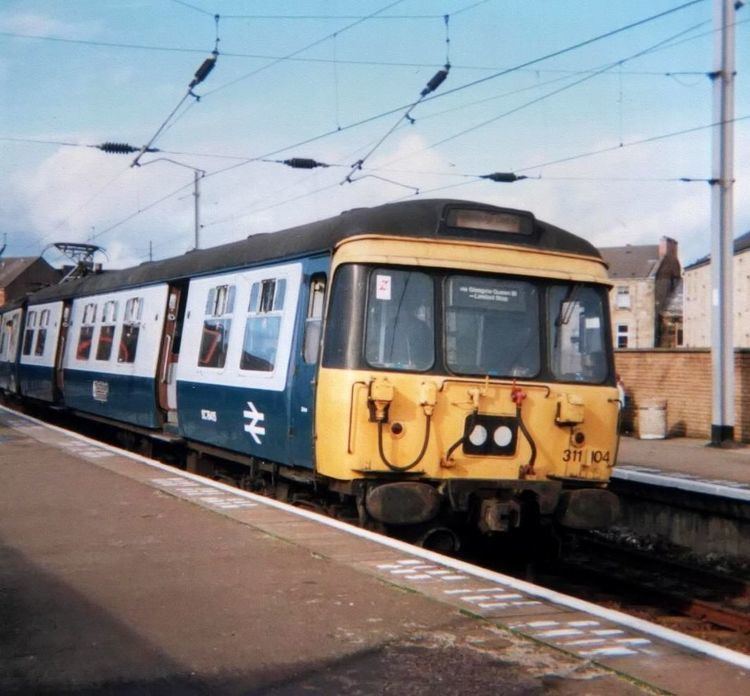In service 1967 - 1990 | Constructed 1967 | |
 | ||
Order no. 30767 (DTSO)30768 (MBSO)30769 (BDTSO) Family name BR First Generation (Mark 1) | ||
The British Rail Class 311 alternating current (AC) electric multiple units (EMU) were built by Cravens at Sheffield in 1967. They were intended for use on the line from Glasgow Central to Gourock and Wemyss Bay, which was electrified in 1967.
Contents
Appearance
Outwardly, the units were virtually identical to the earlier Class 303 units built in 1960. The interiors were also very similar, although the Class 311s had fluorescent lighting (unlike the Class 303s which were fitted with tungsten filament bulbs). The larger fleet of class 303 units had been built by Pressed Steel at their factory in Linwood, Paisley. By the time the Class 311 were required, Pressed Steel no longer built railway carriages, so Cravens of Sheffield worked to the same original drawings, updated at a few points, to build the trains.
Along with the Class 303s, the wrap-around driving cab windows were replaced with flat, toughened glass in the 1970s to give better protection to drivers in the event of attacks by stone-throwing vandals.
Construction
19 units were built, initially classified as AM11 units, and numbered 092-110. This was later changed to Class 311 under the TOPS system, and the units were renumbered 311092-110. Each unit was formed of three carriages; two outer driving trailers, an intermediate motor coach. The technical description of the formation was BDTCOL+MBSO+DTSO. Individual carriages were numbered as follows:
Operations
The units were built to operate services on the newly electrified routes from Glasgow Central to Gourock and to Wemyss Bay; now known as the Gourock and Wemyss Bay branches of the Inverclyde Line.
In practice, the Class 311s operated almost interchangeably with the Class 303s. The units could be found in service across the Glasgow electrified suburban network (north and south of the Clyde, and as far south as Ayr).
Consideration was given to upgrading 11 of the units for the Ayr line electrification until it was found to be cheaper to buy 21 of the new Class 318 units and the plan was cancelled.
Withdrawal
Being a much smaller and unrefurbished fleet, the Class 311s were replaced (in the 1990s) earlier than the Class 303s.
After being withdrawn from normal traffic, two units, nos. 311103/104 were transferred to departmental duties as Class 936 sandite units, nos. 936103/104. These lasted in service until 1999, when they were withdrawn. They were not scrapped immediately as Railtrack was anxious to ensure that one of the units was preserved. In 2002, Railtrack donated one of the units to the Summerlee Heritage Park museum in Coatbridge. The other unit was scrapped in 2003.
One of the driving coaches on the unit donated to Summerlee was subsequently scrapped as part of the refurbishment of the museum.
Preservation
This unit was the former Class 936 sandite unit, no. 936103, formed of 977844+977845+977846.
In February 2017, work will start on restoring the Class 311 unit to it's original condition.
